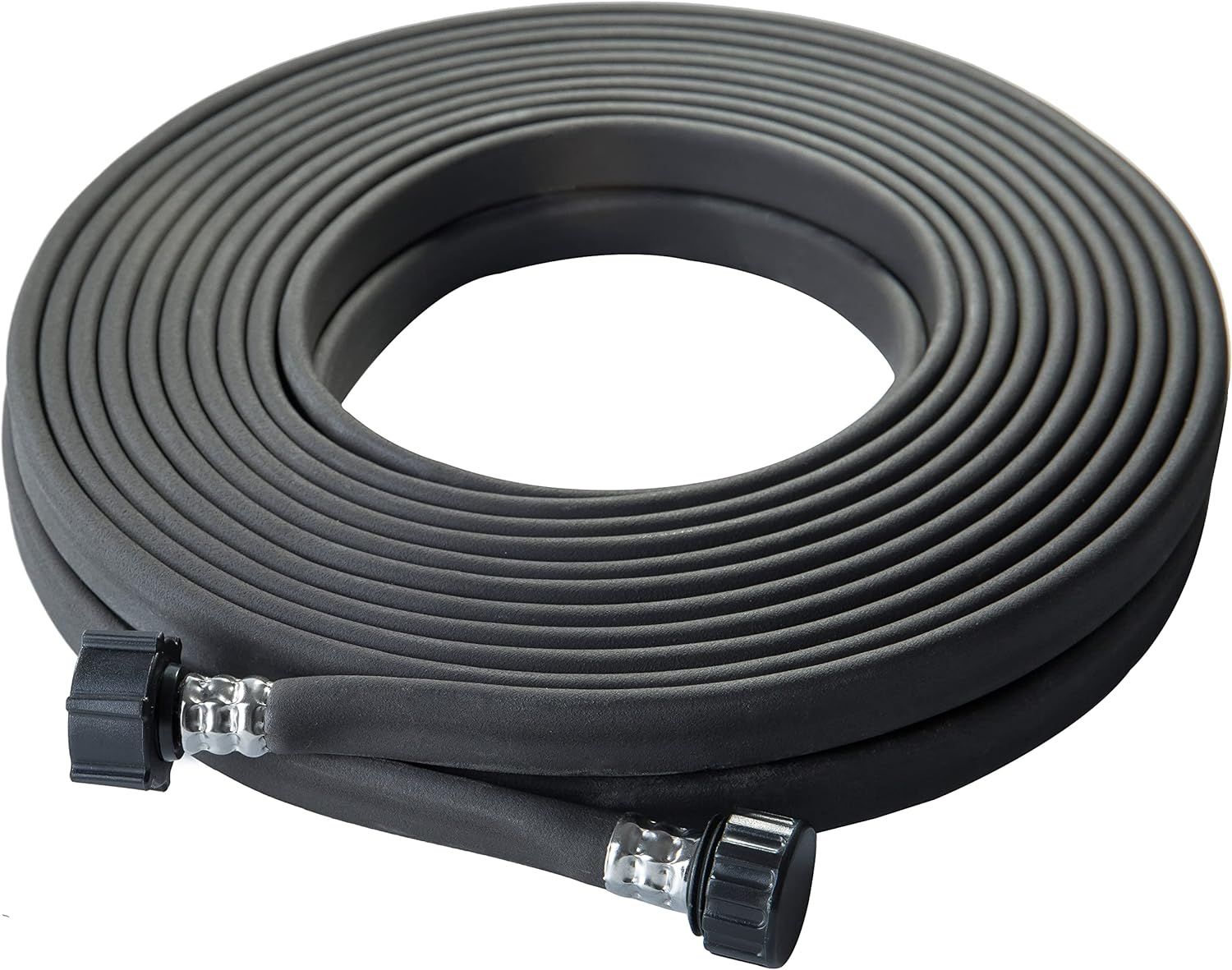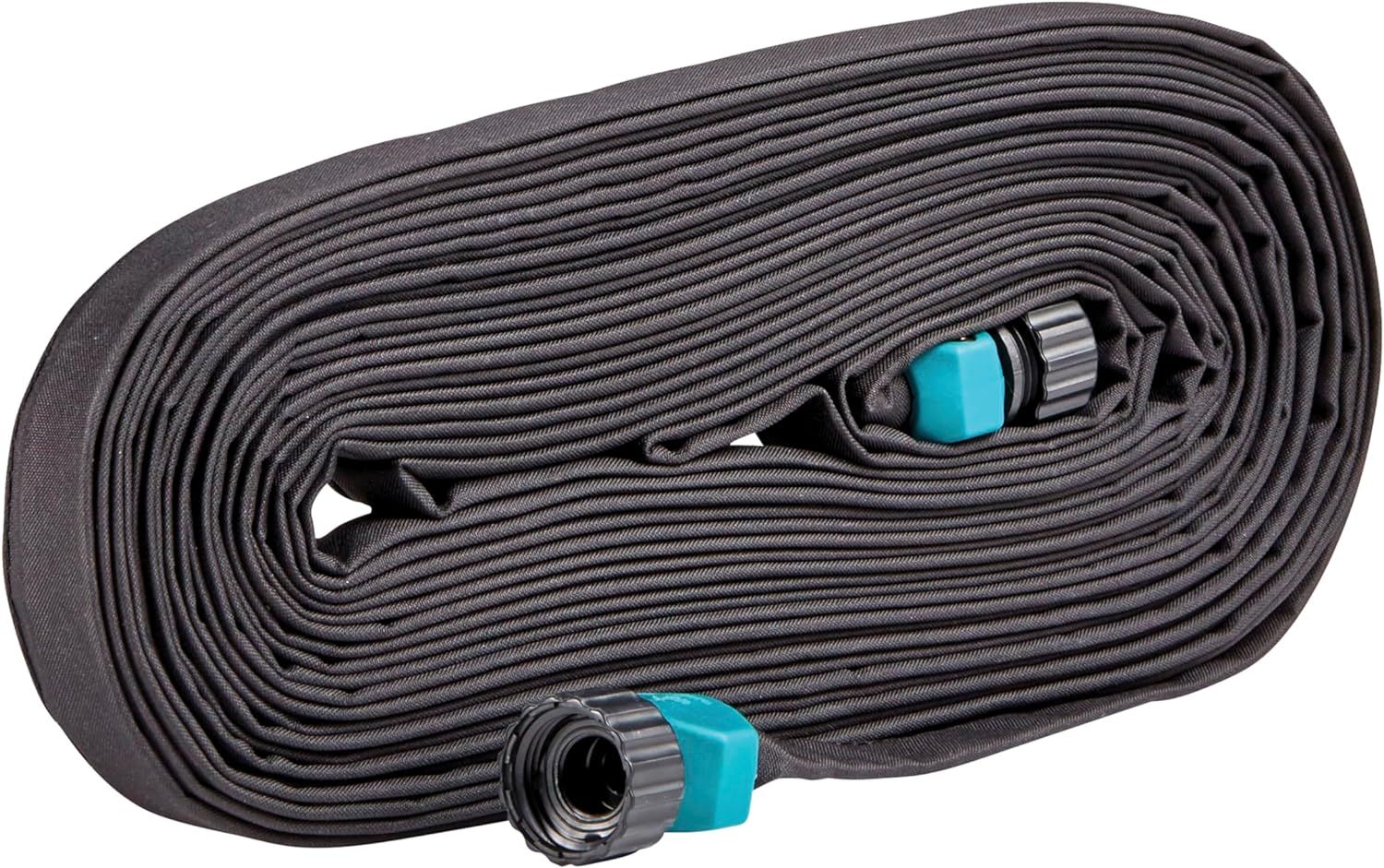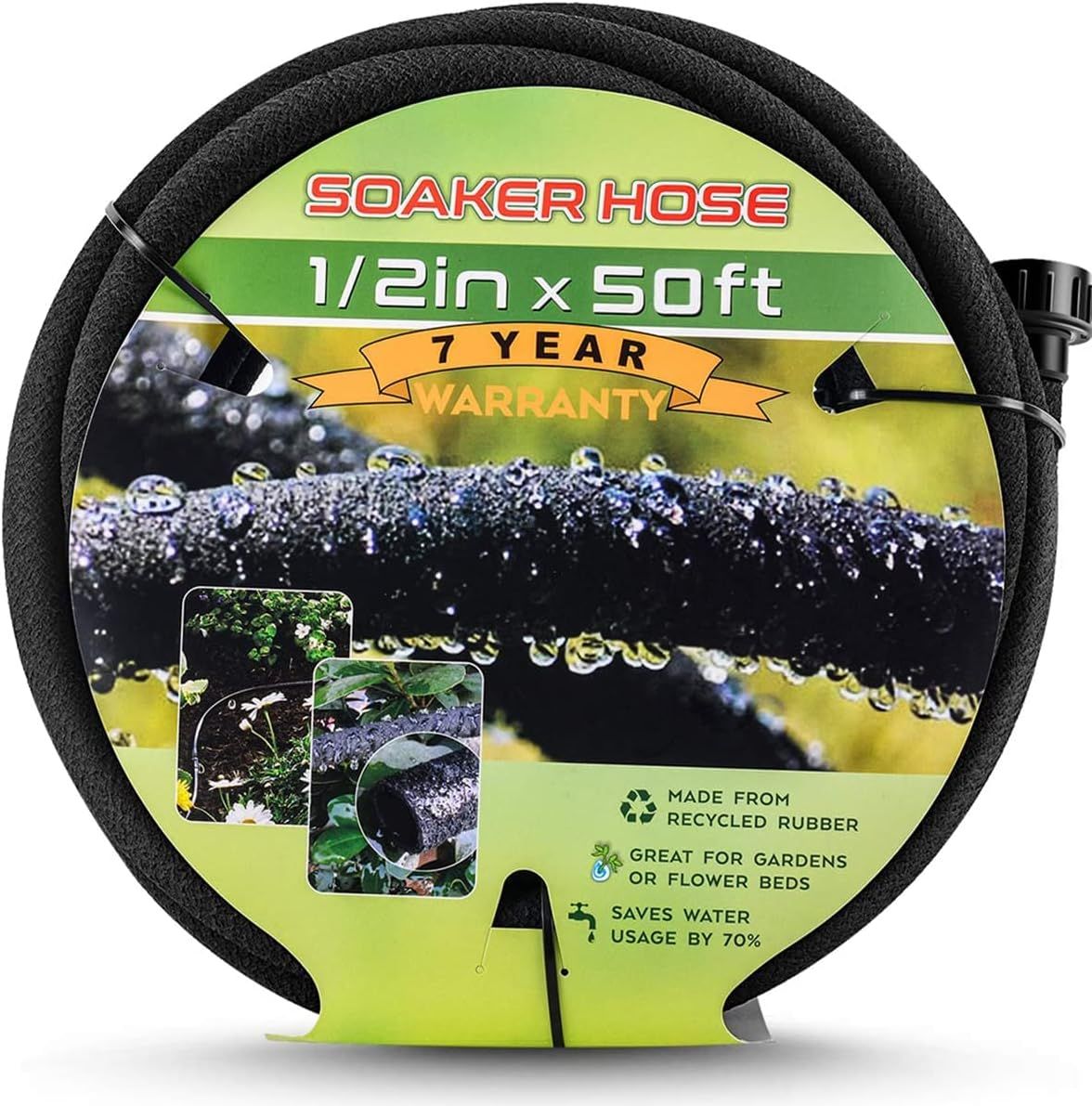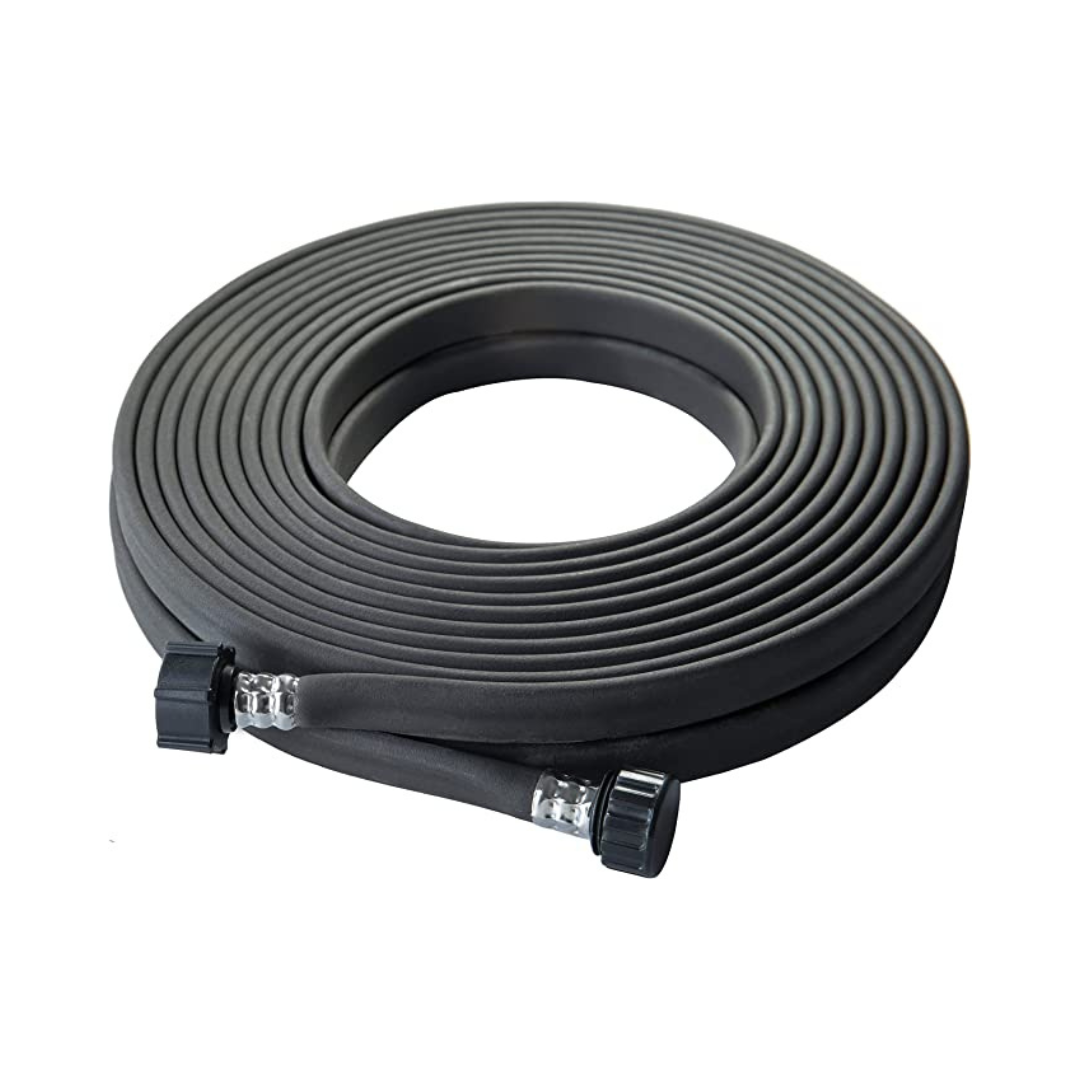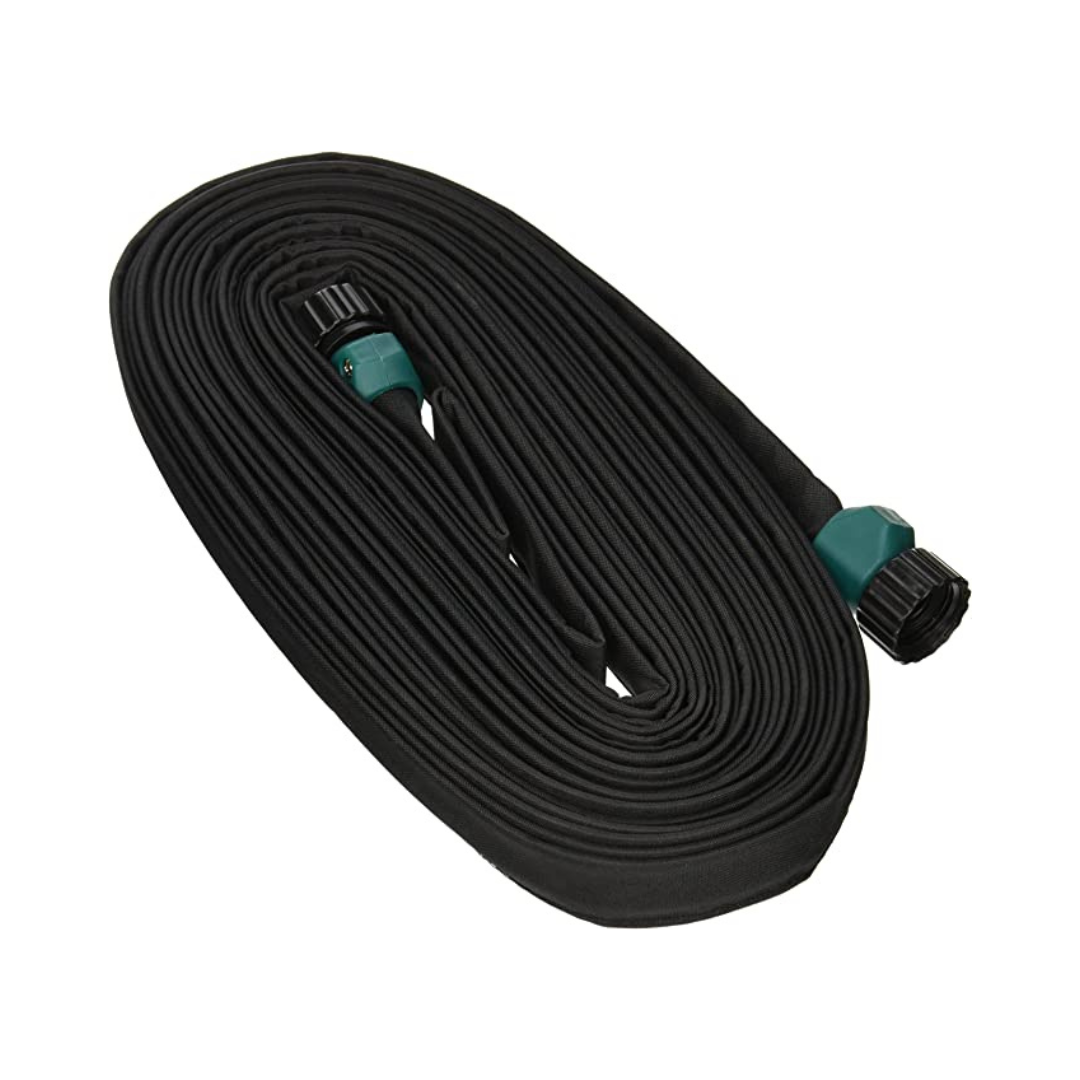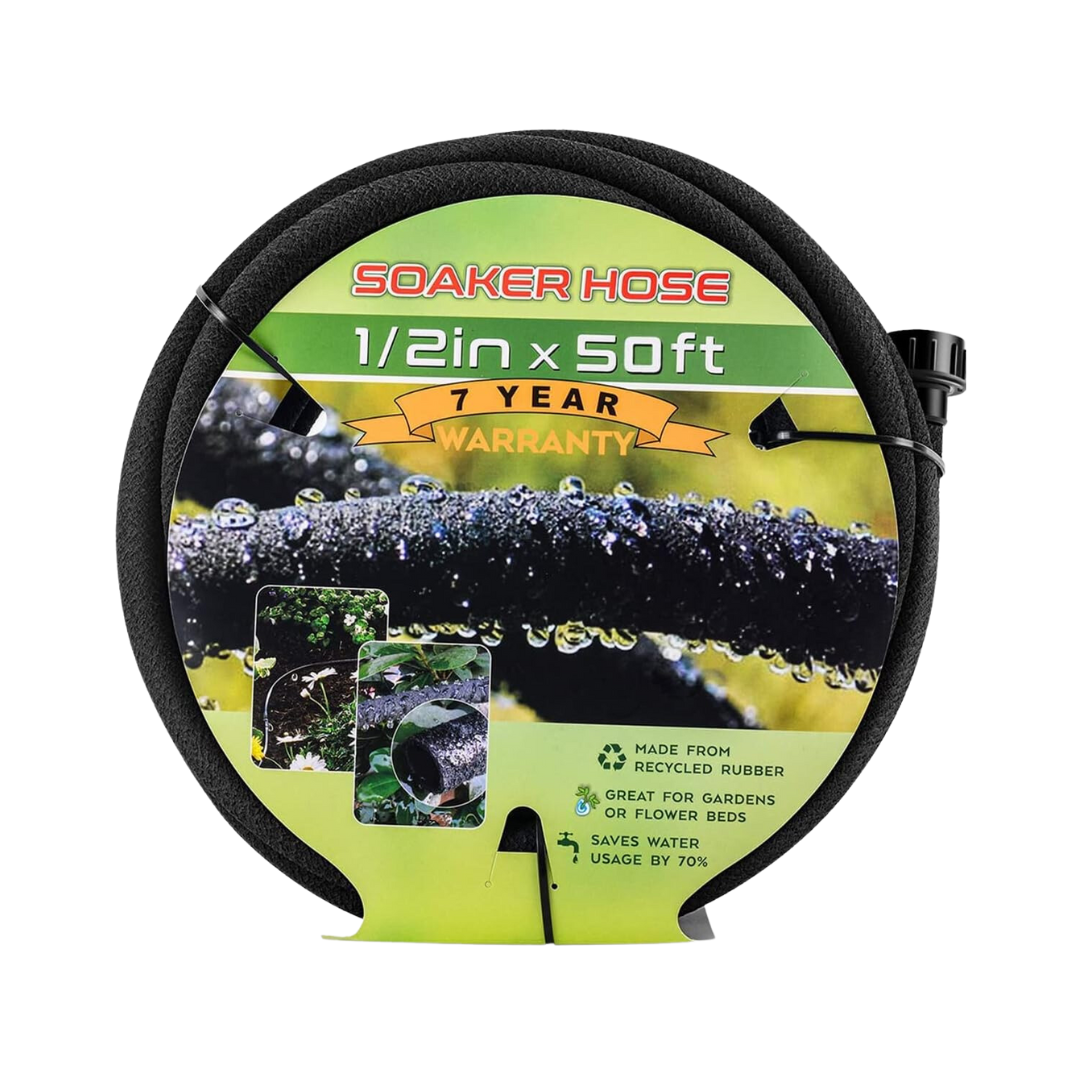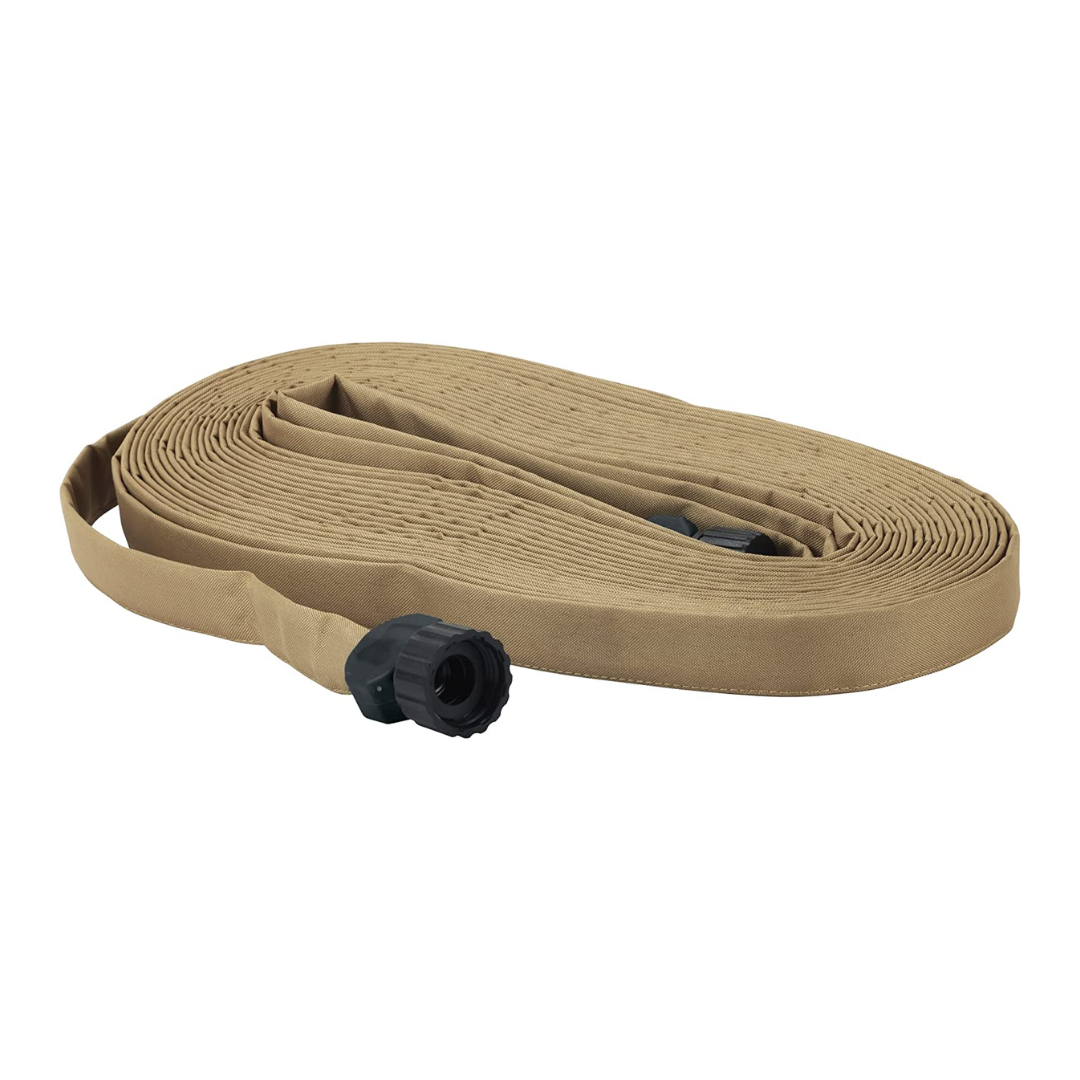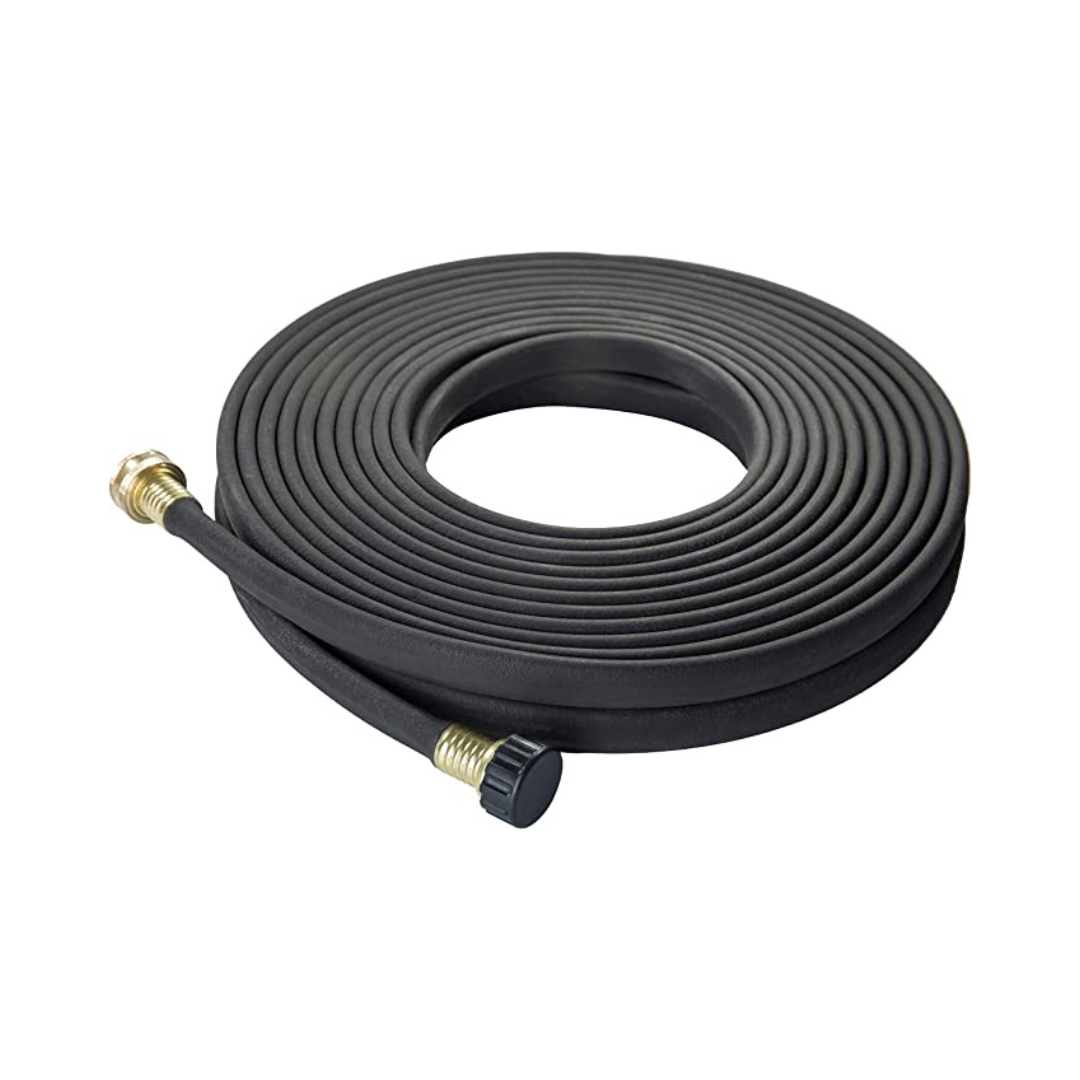We may be compensated if you purchase through links on our website. Our team is committed to delivering honest, objective, and independent reviews on home products and services.
If your plants frequently get dry or oversaturated from inconsistent or improper watering with a traditional garden hose, consider a soaker hose. Soaker hoses keep the roots and soil around your plants just moist enough. If this sounds like the solution you’ve been searching for, we at The This Old House Team are here to help. We researched the best soaker hoses on Amazon. Here are our top recommendations.
Top 5 Soaker Hoses
- Best Flow Rate: GREEN MOUNT Garden Soaker Hose
- Best Eco-Friendly Hose: Gilmour Flat Weeper Soaker Hose
- Best Round Hose: Suneed Soaker Hose
- Best Seal: Melnor Soaker Hose
- Best Basic Hose: LINEX Garden Soaker Hose
Compare Top Soaker Hoses
| Product | Flow Rate | Pressure Level | Length | Material | Weight |
|---|---|---|---|---|---|
| GREEN MOUNT Garden Soaker Hose | 3 GPM | 50–60 pounds per square inch | 50 feet | Rubber and vinyl | 2.8 pounds |
| Gilmour Flat Weeper Soaker Hose | Not listed | 60 pounds per square inch | 50 feet | Vinyl | 1.3 pounds |
| Suneed Soaker Hose | 2 GPM | 60 pounds per square inch | 50 feet | Rubber and polyethylene | 2.7 pounds |
| Melnor Soaker Hose | Not listed | Not listed | 25 feet | Canvas | 14.9 ounces |
| LINEX Garden Soaker Hose | 2 GPM | 60 pounds per square inch | 50 feet | Rubber and vinyl | 3.5 pounds |
| Product | Flow Rate | Pressure Level | Length | Material | Weight |
Best Flow Rate
Key Features
- Has a flow rate of three gallons per minute and a pressure of 50–60 pounds per square inch
- Measures 50 feet long
- Made of rubber and vinyl
- Weighs 2.83 pounds
- Comes with a one-year warranty
What Customers Are Saying
Happy customers we noted thought this hose effectively soaked the roots of their plants, delivering an even amount of water to both ends. However, some reviewers complained about the stiff rubber and vinyl materials, stating that the hose couldn’t bend or flex.
Best Eco-Friendly Hose
Key Features
- Has a pressure of 60 pounds per square inch
- Measures 50 feet long
- Made of vinyl
- Weighs 1.33 pounds
- Comes with a seven-year warranty
What Customers Are Saying
Positive reviewers from customers pointed to this soaker hose’s durable, anti-kink design and various length options. They also thought it was easy to handle. Others experienced issues with unintentional leaking and inconsistent dripping.
Best Round Hose
Key Features
- Has a flow rate of two gallons per two minutes and a pressure of 60 pounds per square inch
- Measures 50 feet long
- Made of rubber and polyethylene
- Weighs 2.69 pounds
- Comes with a seven-year warranty
What Customers Are Saying
Overall, this soaker hose operated as designed, saving many customers money on their water bills. Most users we found said the soaker hose was flexible enough to coil around the roots of plants. Some users had issues with water not flowing to the ends of the hose.
Best Seal
Key Features
- Measures 25 feet long
- Weighs 14.9 ounces
- Comes with a two-year warranty
What Customers Are Saying
Our research showed that satisfied customers found this soaker hose easy to connect. They said it delivered a consistent flow of water to the base of various plants. However, there were complaints about the plastic material of the coupling, which resulted in unintentional leaking.
Best Basic Hose
Key Features
- Has a flow rate of 2 gallons per two minutes and a pressure of 60 pounds per square inch
- Measures 50 feet long
- Made of rubber and vinyl
- Weighs 3.54 pounds
- Comes with a two-year warranty
What Customers Are Saying
Positive reviews we found for this soaker hose mentioned its durability and reach. However, critical customers mentioned longevity issues. They also had trouble maintaining even water flow to the ends.
Buying Guide to Soaker Hoses
A soaker hose waters your plants during dry spells and prevents mold and fungus growth from oversaturation. We made this buying guide to help you select the best soaker hose for your garden.
Length
Most soaker hoses are 25, 50, 75, or 100 feet long. Longer soaker hoses can water more plants at once, but they are at greater risk of getting kinks, clogs, and tangles. Measure your garden before making a purchase, and ensure the length of the hose meets your needs.
Material
Soaker hoses are made from porous materials that allow small amounts of water to drip through them. The most common material is rubber, but soaker hoses made from polyurethane and vinyl are also popular. Many of these materials are recycled or repurposed, making the hoses environmentally friendly.
Kink Resistance
Even when a soaker hose is labeled as kink-resistant, it’s still prone to kinking, leading to cracks and leaks. For more durability, consider a thick rubber expandable garden hose.
Hose Type
There are two types of soaker hoses—flat and round. Flat hoses take up less space but only drip water on one side. Round soaker hoses release water from all sides but are bulkier than flat hoses.
Clog Protection
Because soaker hoses are so porous, dirt and grit can build up inside them, causing clogs that affect water movement. Some soaker hoses have clog-resistant features, such as end cap filters and body coverings, that minimize this risk.
Accessories
To enhance the performance of your soaker hose, consider these optional accessories:
- Calcium filters: To prevent clogs, these filters minimize mineral deposits in your hose.
- End caps: End caps prevent water from flowing out of the ends of the hose.
- Flow discs: Flow discs distribute water over greater distances.
- Regulators: Regulators provide consistent water pressure.
- Stakes: Stakes keep your soaker hose in place.
Soaker Hose Watering Tips
Although soaker hoses have a fairly intuitive design, it’s important to understand how they differ from regular garden hoses. To help you set up and use yours, we outlined some basic tips below.
- Don’t connect your soaker hose to your sprinkler watering system: The water pressure of a sprinkler system is often too strong for the average soaker hose. Instead, connect your soaker hose to the spigot that’s fixed to the outside of your home.
- Keep the end caps attached: Don’t remove the end caps to see if the water is flowing through the conduit. You want the water to stay trapped so that the hose fills enough to push the water out.
- Position your soaker hose downhill from your water source: Gravity plays a major role in water flow. Since water naturally flows downhill, keep your spigot above your soaker hose.
- Test your soaker hose: Don’t bury your new one without testing it first. After you’re satisfied with the positioning of your soaker hose, run water through it for 10–15 minutes, monitoring the watered areas.
Frequently Asked Questions About Soaker Hoses
How is a soaker hose different from a regular hose?
Regular garden hoses release a high-pressure jet of water from one end. Soaker hoses, on the other hand, slowly drip water from their entire length. Because they require less water pressure to work, they’re less likely to damage or overwater your plants.
What do I do with my soaker hose during the winter?
You can remove your soaker hose from your garden bed during the winter. Coil it and store it somewhere dry. However, if your soaker hose is buried underneath mulch or soil, you can leave it there during the winter as long as you disconnect it from faucets, spigots, and other hoses.
How much water pressure do soaker hoses need?
Soaker hoses can function with low water pressure, requiring a minimum of eight to 10 pounds per square inch of pressure. If your home’s water pressure is too high, you may need to purchase a pressure regulator to use your soaker hose.
Will my soaker hose work if it’s buried in the ground?
Some soaker hoses are designed to work buried in the ground. Bury your soaker hose no more than four inches deep. A soaker hose experiences more wear and tear when it’s buried versus aboveground.
How We Selected the Best Soaker Hoses
To provide our readers with the best recommendations possible, we rely on several key sources of information to help guide our selection process.
Initial Research: Our research process began by generating a list of soaker hoses with a significant number of verified-buyer reviews and an average customer review rating of 4–5 stars. We looked at positive and negative reviews alike, focusing on information from both satisfied and critical buyers.
Expert Insights: Through our years of experience, we’ve learned that listening to what others have to say is key to building accurate, well-rounded articles. To complement our in-house expertise, our team looked at reviews and videos from trusted publications and independent testers, spoke with subject matter experts, and drew insights from reader contributions.
Final Product Selection: We then began fine-tuning our list by replacing older models with the latest versions and eliminating any discontinued models. From there, we pared the list down further by comparing each model’s feature set and selecting the best-in-class options for a variety of buyers, budgets, and scenarios.
Why You Can Trust Us
This Old House has empowered homeowners and DIYers for more than four decades with top-notch home improvement advice in the form of television programs, print media, and digital content.
Our team focuses on creating in-depth product and service review content. To date, we’ve published countless reviews of garden, lawn, and outdoor products—from fertilizer and garden hoses to patio furniture and snow blowers.
Once we conclude our research, we craft a comprehensive, user-friendly article of recommended products and additional information to help our readers make the right purchase.
Questions or Comments?
To share feedback or ask a question about this article, send a note to our team at reviews@thisoldhousereviews.com.
